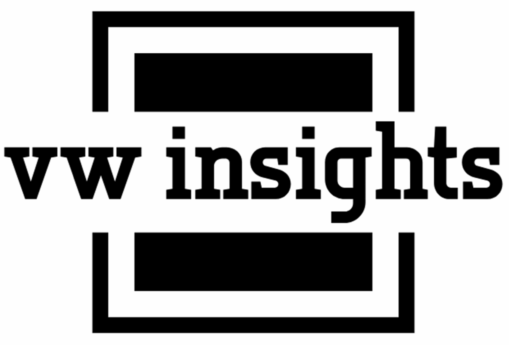Oracle is a US-headquartered information technology company and one of the world’s largest software and hardware companies. Founded in 1977, the company is renowned for its relational database management system (RDBMS) and cloud-based enterprise resource planning (ERP) businesses. Over its forty-plus years since establishment, Oracle has expanded its product matrix and services through acquisitions, including companies like PeopleSoft, Sun Microsystems, Netsuite, and Cerner. These transactions have solidified Oracle’s leading position in the DBMS, ERP, and hardware sectors.
From software services to AI cloud services, Oracle is embracing the AI wave. Oracle’s journey since its founding can be divided into three phases: 1) the traditional database phase (1977-2003), 2) the acquisition spree (2004-2017), and 3) the transformative AI phase (2018-present). The announcement of the Oracle Autonomous Database and the significant development of its Oracle Cloud Infrastructure business marked Oracle’s full entry into the AI era.
1. Historical Review: From Traditional Business to Embracing AI
1.1. The Origin of a Database Legend, a Winding Development Path
The Founding of a Software Giant: Oracle. Oracle, initially known as Software Development Laboratories (SDL), was founded by Larry Ellison in Silicon Valley in 1977. Inspired by IBM researcher Edgar Codd’s paper, “A Relational Model of Data for Large Shared Data Banks,” Ellison foresaw the immense potential of database software. He decided to plan and build a commercially viable Relational Database Management System (RDBMS). In 1979, the first version of Oracle’s product was released. To emphasize the company’s core product, the company was renamed ORACLE in 1983.
Oracle’s debut was a success, winning an order from the U.S. Central Intelligence Agency (CIA). In 1979, the company released the world’s first relational database management system, Oracle 2.0. Ellison named it V2 instead of V1 because he believed most customers were reluctant to buy a first-generation product. Shortly after, Oracle gained its first client, the CIA, and progressively improved the product based on the client’s compatibility requirements for different hardware. In 1983, Oracle released V3, achieving multi-platform portability, which successfully attracted the attention of other potential customers. This portability was also a crucial reason for Oracle’s significant success with its software-only sales business model, forming the foundation of its substantial market share today.
Strong Moat Leads to Soaring Performance and IPO. The success of its relational database management system allowed Oracle to thrive in the market, and its compatibility with IBM’s SQL query technology significantly boosted its market share. Oracle successfully went public on the New York Stock Exchange in 1986, experiencing a substantial single-day surge in its stock price.
Riding the Internet Wave, Oracle Catches Up. In the database business, Oracle officially released ORACLE 8i in September 1998. The “i” stood for Internet, and this version added numerous features designed to support the Internet. It provided comprehensive Java support for database users. Oracle 8i became the first database to fully integrate a native Java runtime environment, allowing Oracle stored procedures to be written in Java. In the following years, the company successively released several versions of Oracle 8i, gradually adding new features for network applications, solidifying Oracle’s position as the undisputed leader in the database industry.

1.2 Acquisition Spree Kicks Off: Building a Full-Stack Business
To strengthen its product portfolio and boost market competitiveness, Oracle began systematically acquiring industry leaders in various sectors, aiming to form comprehensive, end-to-end solutions across all domains and industries:
- PeopleSoft: In 2005, Oracle completed its acquisition of the HCM software platform PeopleSoft for $10.3 billion. This deal reshaped the landscape of enterprise management software, which had previously been dominated by three giants: SAP, Oracle, and PeopleSoft.
- Siebel Systems: Oracle acquired Siebel Systems, the world’s leading provider of customer relationship management (CRM) software, for $5.85 billion in 2006. This acquisition enhanced Oracle’s offerings in the management software domain.
- Hyperion: In 2007, Oracle acquired performance management software leader Hyperion Solutions, further refining its existing software products and financial suite.
- BEA: In 2008, Oracle acquired BEA, the world’s largest middleware software company, for $8.5 billion. This acquisition signified Oracle’s move beyond being solely a software company, laying the groundwork for its subsequent transformation into a cross-industry integrated solutions provider.
- Sun Microsystems: In 2010, Oracle completed the acquisition of Sun Microsystems, a provider of enterprise computing systems, marking Oracle’s first venture into the hardware sector. This acquisition brought a crucial product to Oracle: Java. Through Sun, Oracle could design an integrated system, optimizing the performance, reliability, and security of its software and hardware products. Larry Ellison commented on the deal, “The acquisition of Sun will, to some extent, change the existing landscape of the IT industry.”
In just a few years, Oracle acquired over 70 companies, almost entirely covering applications across various industries like manufacturing, commerce, finance, government, and utilities. We believe this wave of acquisitions held significant strategic importance for Oracle. It not only enriched the company’s product matrix but also created a top-to-bottom, closed-loop solution covering all industries, providing the most robust moat for its database and application software businesses.

Leave a Reply